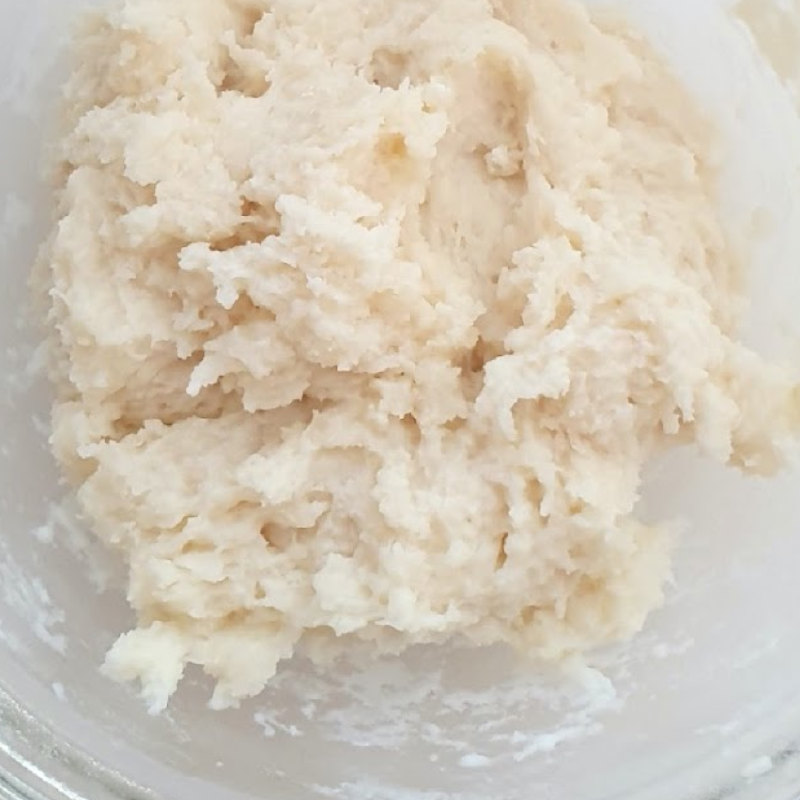Yudane Method (For Ultra Soft Japanese Bread)
Here are the specialties from each country with their local names, using techniques similar to Yudane:
-
Tangzhong 汤中 (China): This method is used in the preparation of Hokkaido Milk Bread (北海道牛奶麵包, Hokkaidō niunǎo miànbāo), an extremely soft and tender bread, often baked using the Tangzhong method.
-
H2O Gelatinization (South Korea): In Korea, this method is used to make 우유빵 (uyubbang, Korean milk bread). This bread is extremely tender due to the addition of milk or hot water to the dough.
-
Korean Milk Bread (우유빵): This Korean bread, called 우유빵 (uyubbang), uses a method similar to Yudane, with hot milk or hot water to make the crumb soft, light, and airy.
-
Rice Flour 米粉 (Taiwan): In Taiwan, the technique is used in milk breads such as 牛奶麵包 (niú nǎi miànbāo, Taiwanese milk bread), often made with rice flour paste to make the crumb elastic and soft.
-
Bánh mì (Vietnam): The Vietnamese Bánh mì (bánh mì) sometimes uses similar techniques to create a light and airy crumb, although this method is not as commonly used as Tangzhong or Yudane.
-
Naan and Roti (India): In India, breads like Naan (नान) or Roti (रोटी) are made more tender by adding milk or yogurt, though this is not as formalized a method as Yudane.
All these methods aim to improve the texture of the bread, making it softer, lighter, and airier, by retaining moisture with the use of warm ingredients.
 Garanties sécurité
Garanties sécurité
(à modifier dans le module "Réassurance")
 Politique de livraison
Politique de livraison
(à modifier dans le module "Réassurance")
 Politique retours
Politique retours
(à modifier dans le module "Réassurance")
Yudane: The Japanese Technique for Ultra-Soft Bread
Yudane (湯種) is a refined Japanese technique used to make bread exceptionally tender and soft. By using this method, you create a special dough from flour and boiling water, which is then incorporated into the main bread dough, providing a soft, light texture and extended freshness.
Ingredients for the Yudane
- 50 g of wheat flour (小麦粉, komugiko)
- 50 ml of boiling water (お湯, oyu)
Instructions
Preparing the Yudane:
- In a bowl, pour 50 g of wheat flour (小麦粉, komugiko).
- Add 50 ml of boiling water (お湯, oyu) to the flour.
- Stir vigorously until the flour is fully hydrated and you get a thick, homogeneous dough.
- Cover the bowl with plastic wrap and let it rest at room temperature for at least 4 hours, or ideally overnight. This step allows the starch in the flour to gelatinize, giving the bread its soft texture.
Incorporating the Yudane into the Bread Dough:
Once the Yudane is ready, incorporate it into your usual bread dough during the first mixing stage. The dough will then be incredibly tender and soft.
Benefits of Yudane
- Soft Texture: Thanks to Yudane's ability to retain moisture, the bread becomes exceptionally tender and airy.
- Freshness: Bread made with this method stays fresh longer due to the moisture it retains.
- Flavor: The gelatinization of the starch gives the bread a subtly sweet taste, offering a delicate and delicious flavor.
The Origin of Yudane
Though similar to the Chinese Tangzhong (湯種, tangzhong) technique, Yudane is a method deeply rooted in Japanese tradition. It is commonly used in the making of Shokupan (食パン, Japanese milk bread) and other soft breads. Shokupan, known for its soft and fluffy crumb, is one of the most famous examples of using Yudane.
A Traditional and Modern Method
By incorporating this method into your recipes, you can create soft breads perfect for sandwiches (サンドイッチ, sandoicchi), breakfasts, or luxurious toasts. If you want to recreate the taste and texture of traditional Japanese bread, Yudane is the key to incredibly soft and flavorful bread.


